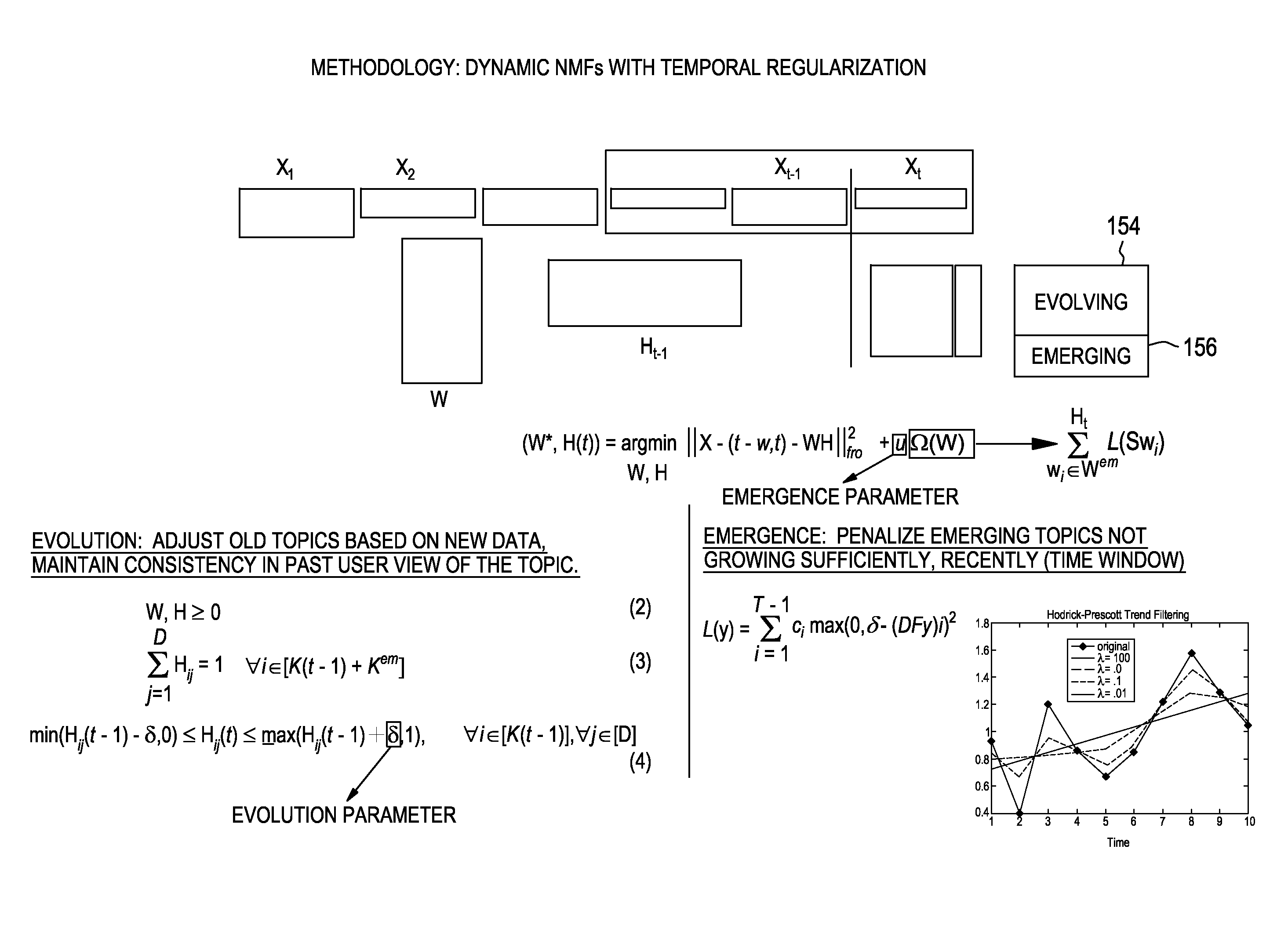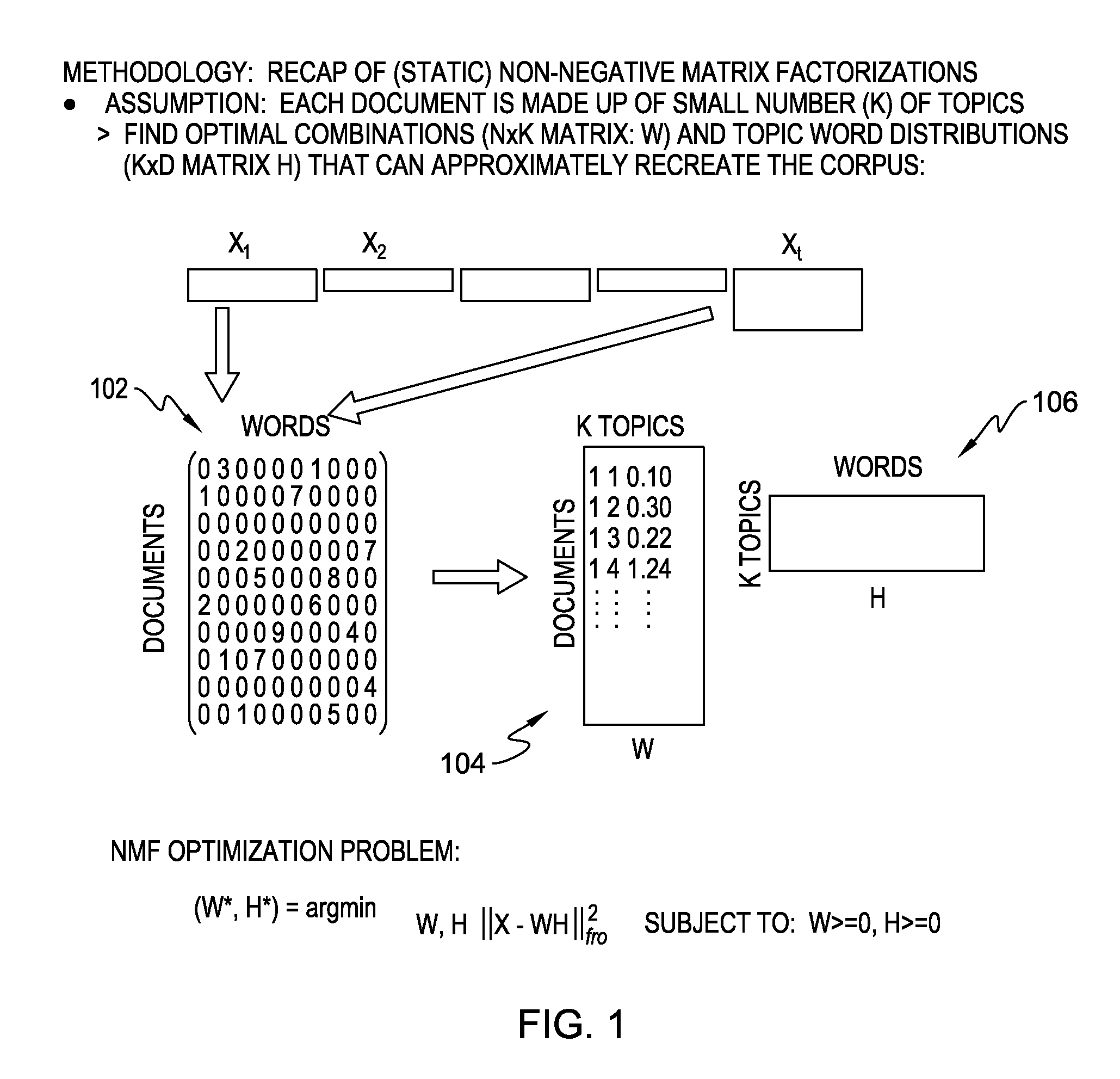Inferring emerging and evolving topics in streaming text
a streaming text and topic technology, applied in semantic analysis, instruments, computing, etc., can solve the problems of drifting underlying topics, new twists in streaming datasets, etc., and achieve the effect of large datasets and graceful scaling
- Summary
- Abstract
- Description
- Claims
- Application Information
AI Technical Summary
Benefits of technology
Problems solved by technology
Method used
Image
Examples
case 1
[0055] hi is evolving: For an evolving topic, the optimization needs to be performed under the constraints of equations (4) and (3). Thus the optimum hi* is obtained by projection onto the set ={hi:hi εΔD, lj≧hij≧uj} for appropriate constants lj and uj. This is equivalent to a projection onto a simplex with box constraints. Adapting a method due to [P. M. Pardalos and N. Kovoor. An algorithm for singly constrained class of quadratic programs subject to upper and lower bounds. Mathematical Programming, 46:321-328, 1990], we can find the minimizer in O(D) time i.e., linear in the number of coordinates.
case 2
[0056] hi is emerging: For an emerging topic ={hi:hi εΔD} and the optimization equation (8) becomes equivalent to a projection onto the simplex ΔD, the same algorithm [P. M. Pardalos and N. Kovoor, An algorithm for singly constrained class of quadratic programs subject to upper and lower bounds, Mathematical Programming, 46:321-328, 1990] again gives us the minimizer in linear time O(D).
[0057]Optimization over evolving wi: When wi ε Wev, the second term in equation (7) does not contribute and using the RRI scheme, the optimization problem can be written down as wi*arg minwi≦0∥R−wihiT∥2. Similar to equation (8), simple algebraic operations yield that the above minimization is equal to the following simple projection algorithm
[0058]argminwi≥0wi-Rhi / hi22(9)
[0059]The corresponding minimizer is simply given by
[0060]wij=max(0,1hi2(Rhi)j).
[0061]argminwi≥0R-wihiT2+L(Swi)
[0062]Emerging wi: When wi ε Wem, the RRI step of the corresponding optimization problem look like
[0063]ar...
PUM
 Login to View More
Login to View More Abstract
Description
Claims
Application Information
 Login to View More
Login to View More - R&D
- Intellectual Property
- Life Sciences
- Materials
- Tech Scout
- Unparalleled Data Quality
- Higher Quality Content
- 60% Fewer Hallucinations
Browse by: Latest US Patents, China's latest patents, Technical Efficacy Thesaurus, Application Domain, Technology Topic, Popular Technical Reports.
© 2025 PatSnap. All rights reserved.Legal|Privacy policy|Modern Slavery Act Transparency Statement|Sitemap|About US| Contact US: help@patsnap.com



